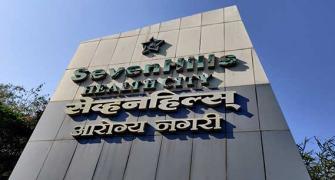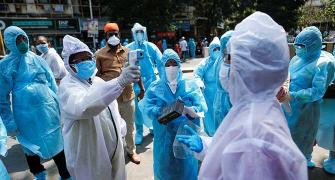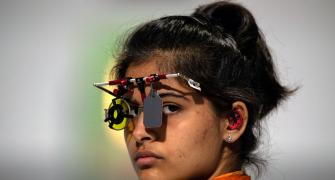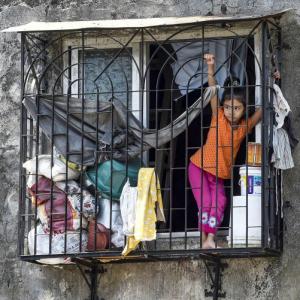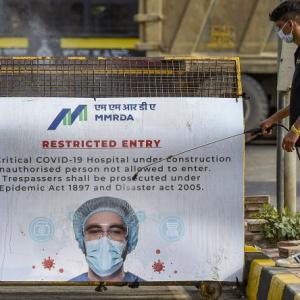Urban planners and real estate experts say bad town planning in Mumbai and rising deaths during the ongoing pandemic are a “sad reality”.
Dev Chatterjee and Raghavendra Kamath report.
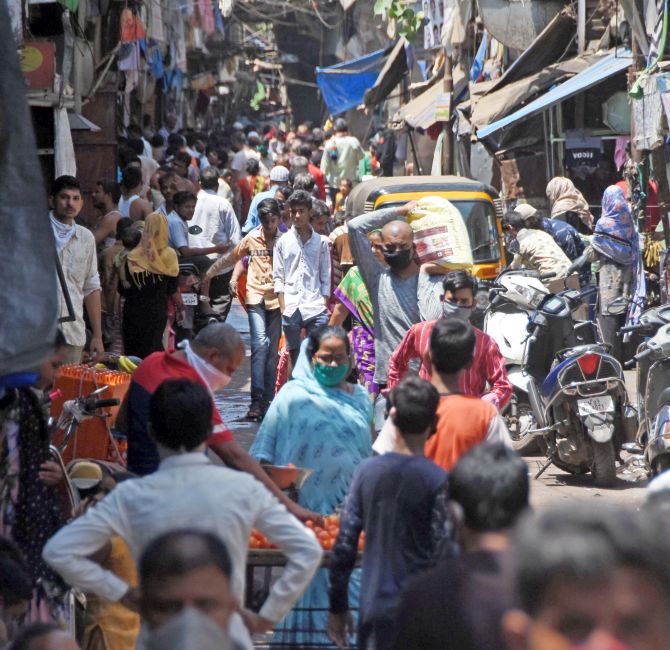
In 2007, the Maharashtra government, run by the Congress, set up a committee led by economist Percy Mistry to recommend how Mumbai could be converted into an international financial hub.
The idea was to take advantage of Mumbai’s geographical location between Singapore and Dubai and convert it into a world-class city.
Among other issues, the report pointed out Mumbai’s deficiencies in converting into an international financial centre.
These included crumbling housing in dilapidated buildings; poor road/rail mass transit as well as the absence of water-borne transport; absent arterial high-speed roads/urban expressways; the poor quality of airports, airlines, and air-linked connections domestically and internationally; poor provisions of power, water, sewerage, waste disposal, as well as a paucity of high-quality residential, commercial, shopping and recreational space.
Problems were plenty but the report was optimistic that these issues would be sorted out.
Thirteen years later, as Mumbai wages a crippling battle with the pandemic, the problems pointed out by the report remain, but with a major difference: The housing density (read overcrowding) in the city has increased manifold, which has led to a significant spike in corona cases with 757 deaths (as of Monday).
The urban transport infrastructure has not improved much, roads are dug up, railway bridges (like in Lower Parel) are under construction for months, and the second airport -- awarded to the GVK group -- has failed to take off.
Vertical slums

Urban planners and real estate experts say bad town planning in Mumbai and rising deaths during the ongoing pandemic are a “sad reality”.
“The reality of illegal structures, which have mushroomed across the city and suburbs, is that these have bypassed the town planning process,” said Niranjan Hiranandani, a Mumbai-based real estate developer and president of Assocham.
Recently, speaking in a webinar, Tata group patriarch Ratan Tata spoke of how the high density of housing among the economically weaker sections as also lower income groups had created “high-rise slums” as the end-product of what we refer to as “planned development”.
Hiranandani said: “Whether we blame this on land scarcity in Mumbai, the lopsided demand/supply ratio, which impacts price points or the planning process, the reality is that slums exist, and are among the leading cause of the high density of population.”
According to the latest statistics, more than half of Mumbai’s population live in slums (55 per cent) with no access to clean water, sanitation, and health care.
Well-known architect Hafiz Contractor says the high density of Mumbai is not a problem if there are proper plans in place.
Singapore, Hong Kong, and New York too have a high population density.
“If you give parks which are half the size of Oval Maidan in new housing complexes, where is the problem? Today there are problems because of old laws. If laws are changed, problems will go away,” he said.
The state government has drawn up plans on housing slum dwellers, providing jobs to them, and generating revenues. “We have sought appointments with the state government regarding this.”
Real estate developers say almost every stakeholder has ignored the rehabilitation of slums in Mumbai.
“Mumbai will have people in different income levels. We need to respect that and plan accordingly,” said Vikas Oberoi, chairman of Oberoi Realty.
The solutions
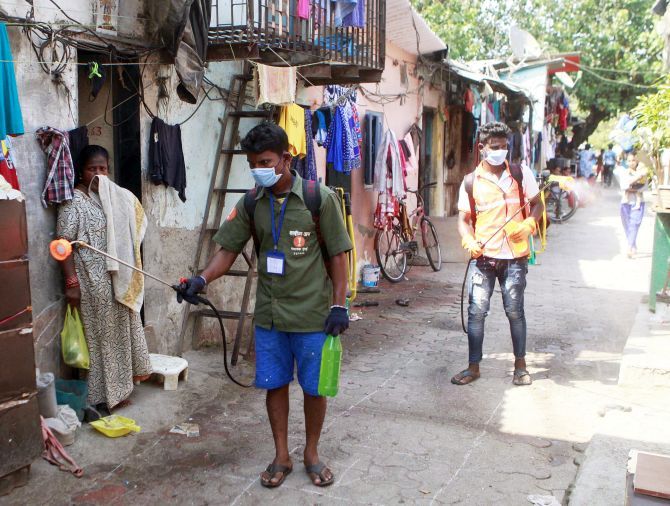
Experts say Mumbai has reached a point of no return and unless drastic steps are taken, the metropolis will be host to such pandemics.
Ramesh Nair, chief executive officer of real estate advisory firm JLL, says in order to have a holistic decongestion plan, there is a need to look at the Mumbai Metropolitan Region as one unit with different agencies and authorities.
“The state government and various local bodies/authorities should take a relook at the density norms of new residential projects,” Nair said.
At present, a redevelopment project offers very small housing units to slum dwellers with no extra facilities.
“Cluster development plans should have a balance between land monetisation and project construction,” he added.
According to Hiranandani, another solution is to reduce density in “city centre spaces” by initially shifting those who can work from home to peripheral areas.
In Mumbai and the Mumbai Metropolitan Region, it is not just new roads and flyovers or metro lines, it will also include water-based transport and the Mumbai Trans Harbor Link to enable opening up the vast hinterland for “spaced out’ housing development.
Builders say Mumbai has to go vertical like Singapore while ensuring sufficient infrastructure to handle the high density population in a “spaced out” manner.
One of Mumbai’s “virus” hot spots -- and having the highest population density in the world -- Dharavi is a test case of how the Mumbai authorities have failed their citizens.
Despite several redevelopment plans made by successive governments, the project has failed to take off.
Kamal Khetan, chairman and managing director of Sunteck Realty, said the population of Dharavi could be accommodated in just 25 per cent of the 520 acres occupied by the slums.
“Even after setting aside land for a huge stadium-sized playground, and health care facilities, there is enough land for real estate companies to re-develop and subsidise buildings for Dharavi residents,” said he.
During the previous regime, the Indian Railways kept aside land in Matunga in Central Mumbai to house Dharavi residents.
Nair says the cluster development plans should have a balance between land monetisation and project construction.



